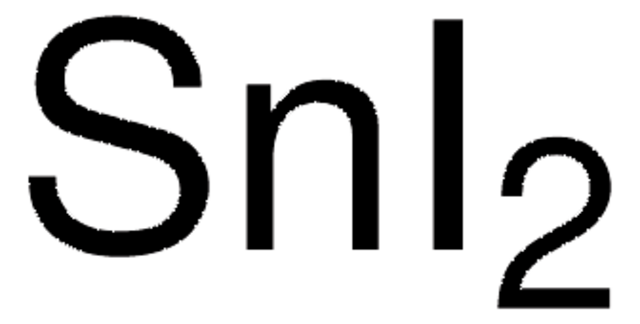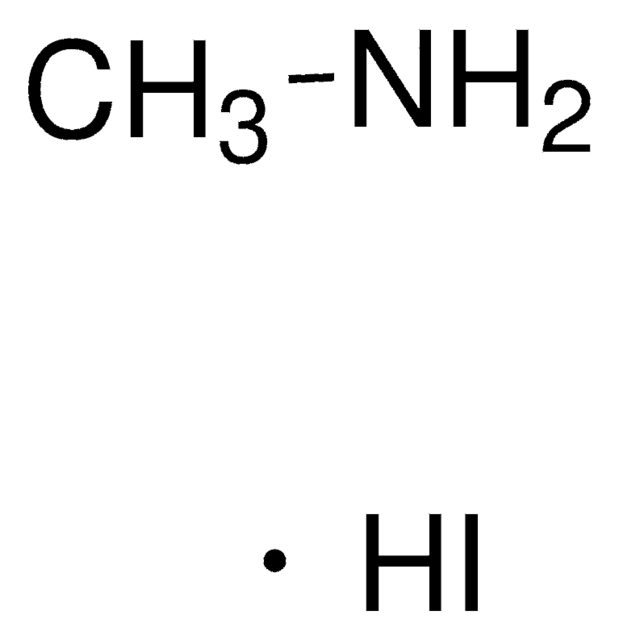203033
Cesium iodide
99.999% trace metals basis
Synonyme(s) :
Caesium iodide, Caesium monoiodide
About This Item
Produits recommandés
Qualité
for analytical purposes
Niveau de qualité
Essai
99.999% trace metals basis
Forme
solid
Impuretés
≤15.0 ppm Trace Metal Analysis
Pf
626 °C (lit.)
Densité
4.51 g/mL at 25 °C (lit.)
Chaîne SMILES
[I-].[Cs+]
InChI
1S/Cs.HI/h;1H/q+1;/p-1
Clé InChI
XQPRBTXUXXVTKB-UHFFFAOYSA-M
Vous recherchez des produits similaires ? Visite Guide de comparaison des produits
Catégories apparentées
Application
It can be used to prepare brightest red emitting Cs2HfI6 scintillator which is applicable in high resolution gamma spectroscopy.
It can also be used tosynthesize Cesium based nanocrystals for the detection of ionizingradiations.
Caractéristiques et avantages
- High quantum efficiency
- High stability to ambient air and gas environment
Mention d'avertissement
Warning
Mentions de danger
Conseils de prudence
Classification des risques
Aquatic Acute 1 - Repr. 2
Code de la classe de stockage
13 - Non Combustible Solids
Classe de danger pour l'eau (WGK)
WGK 2
Point d'éclair (°F)
Not applicable
Point d'éclair (°C)
Not applicable
Équipement de protection individuelle
dust mask type N95 (US), Eyeshields, Faceshields, Gloves
Faites votre choix parmi les versions les plus récentes :
Déjà en possession de ce produit ?
Retrouvez la documentation relative aux produits que vous avez récemment achetés dans la Bibliothèque de documents.
Les clients ont également consulté
Articles
Colloidal quantum dots (CQDs) are semiconducting crystals of only a few nanometers (ca. 2–12 nm) coated with ligand/surfactant molecules to help prevent agglomeration.
Global Trade Item Number
| Référence | GTIN |
|---|---|
| 203033-10G | 4061838765529 |
| 203033-1G | 4061838765536 |
| 203033-50G |
Notre équipe de scientifiques dispose d'une expérience dans tous les secteurs de la recherche, notamment en sciences de la vie, science des matériaux, synthèse chimique, chromatographie, analyse et dans de nombreux autres domaines..
Contacter notre Service technique












